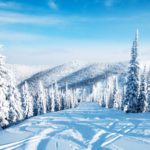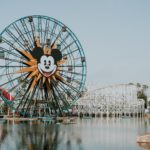Naturally, every beach has its own variation of sand color: white, buttery yellow, and even golden. However, some beaches have more unique colors. Have you ever seen a beach with black sand?
Typically, beaches with black sand are near volcanoes. The remnants and fragments that form the sand come from the lava when it touches the ocean waters.
Below, you’ll find six black sandy beaches located in the Hawaiian islands.
Which Hawaiian Island Has the Best Black Sand Beaches?
There are two top contenders in the main Hawaiian Islands: Maui and the Big Island.
Though some options are a little more challenging to reach, many of the beaches on this list are easily accessible. If your main priority is to visit a black sand beach, the Big Island should be your first stop.
Maui doesn’t have quite as many, but there is one really exceptional black sand beach for you to enjoy. Aside from this beach that is well-known by tourists, other options are less popular but still stunning. You might consider them as more dark to light grey as opposed to black. They are all still a rare sight in Hawaii.
So if you’re waffling between visiting Maui or Big Island, you honestly can’t go wrong with either choice! Both of these tropical destinations have at least one black sand beach for you to walk around and enjoy.
Depending on what constitutes a black beach to you, Kauai might be another island with a black sand beach. It all depends on how dark the sand has to be for you to consider it black.
Oahu doesn’t have any black sand beaches, though there are still some desirable locations if you are just interested in seeing the blue coasts that the island has to offer.
Now, let’s take a look at some of the most famous black sand beaches found in Hawaii!
Punalu’u Beach
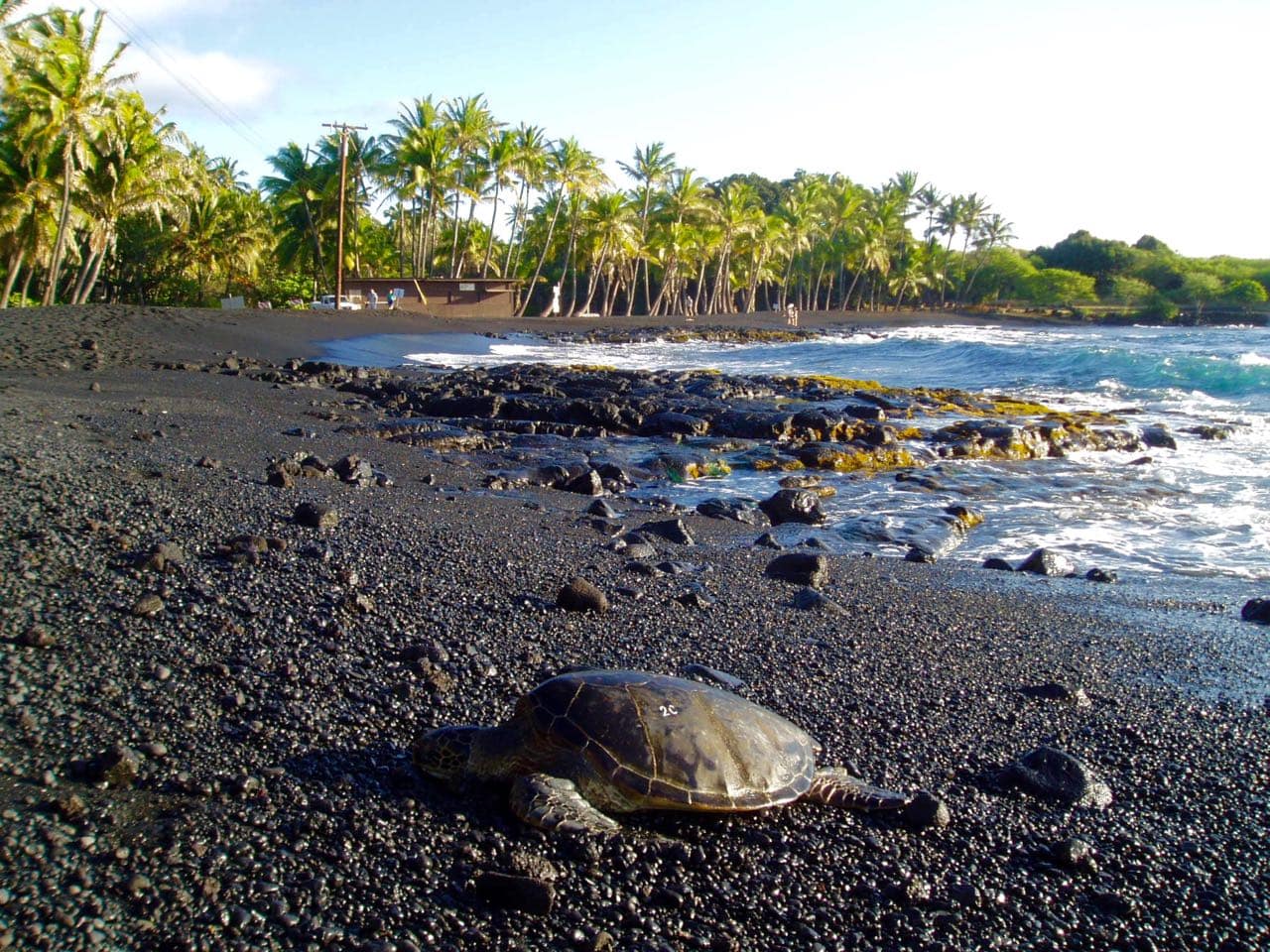
Punalu’u Beach lives up to the billing of a black sand beach. Punalu’u is one of the most famous black sand beaches found in Hawaii.
The lava from the Kilauea and Mauna Loa volcanoes cooled rapidly after touching the sea and disintegrated into microscopic pieces.
Although the sand is a bit coarse, it feels good when under your feet.
Apart from the sand, there is a spectacular pond with lily pads on the fringe of lush tropical plants and coconut palms all around the beach. Locals and tourists alike often comment on how beautiful and relaxing this beach is.
You can find the jet-black shores of Punalu’u between Naalehu and Pahala. There are coconut palms on the upper edge of the sand, and you get a chance to encounter Hawaiian Green Sea Turtles. The large honu, as they also call them, often get caught lounging on the beach.
Whatever you do, refrain from touching these turtles, as they are indeed protected. Also, do not remove any black sand from the beach.
Since Punalu’u is a beach park, there are numerous facilities around, including bathrooms and qualified lifeguards. These amenities allow you to enjoy a convenient lunch while experiencing all of the wonders of a black sand beach.
To visit Punalu’u black sand beach, drive along the southern coast from Kona to the Volcanoes National Park area.
Pololu Valley
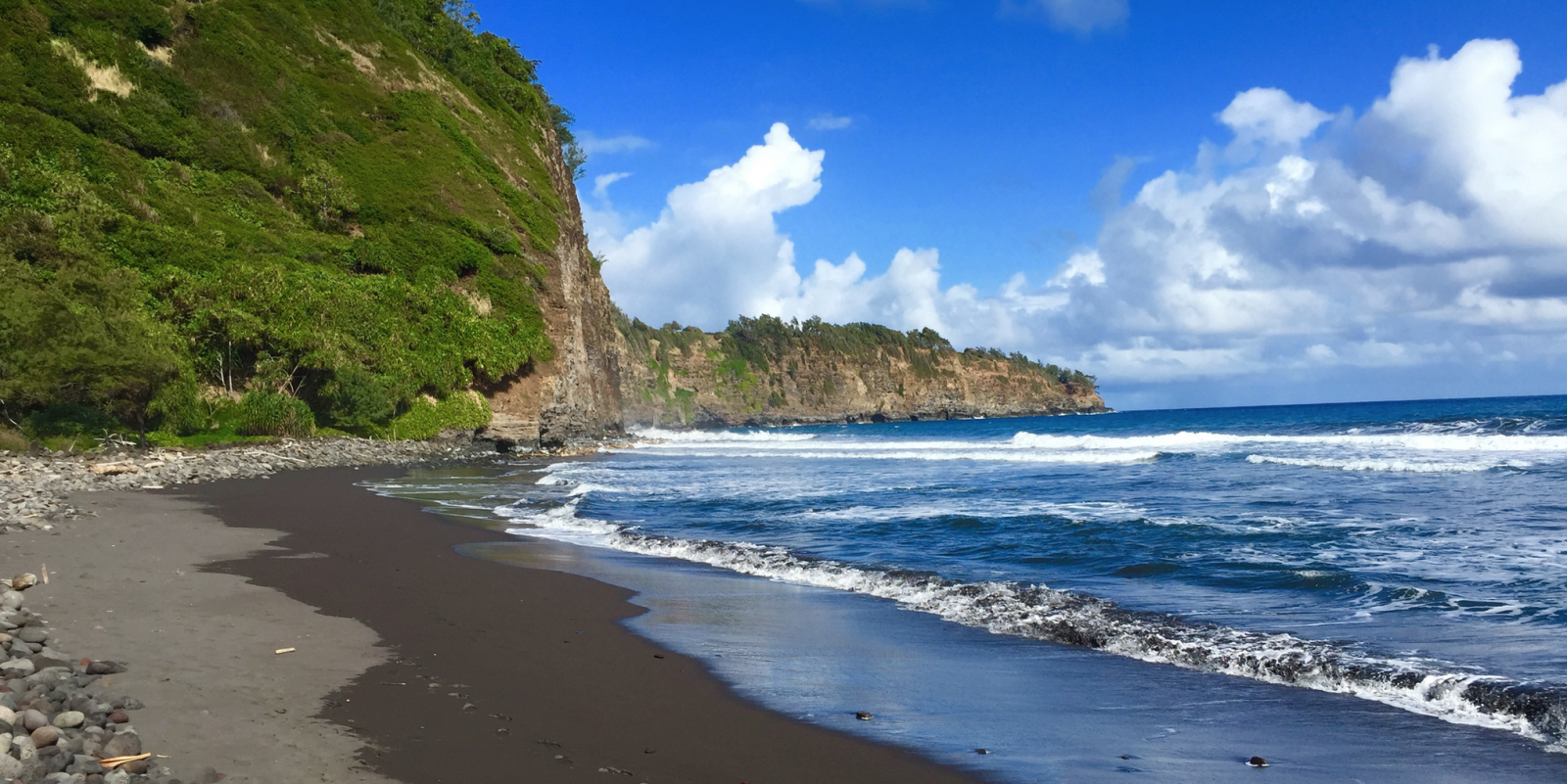
Of all the valleys on the Big Island, Pololu is the furthest north. These valleys are carved inside of the Kohala volcano, which is near lush pastures in the Kohala region.
Take in the gorgeous views of the landscape and their beautiful steep cliffs that finish off in the ocean. Aside from this, the main event is the hike to the black sand beach on the valley floor.
Honestly, the ocean at Pololu is not safe for swimming. There are also a lot of stones near the entryway, causing abrasions to bare feet and making it difficult to enter the waters.
Riptides, undertow, and high surf are nearly always present. We advise that only experienced swimmers go into the water while being cautious not to go too deep.
Kaimu Beach
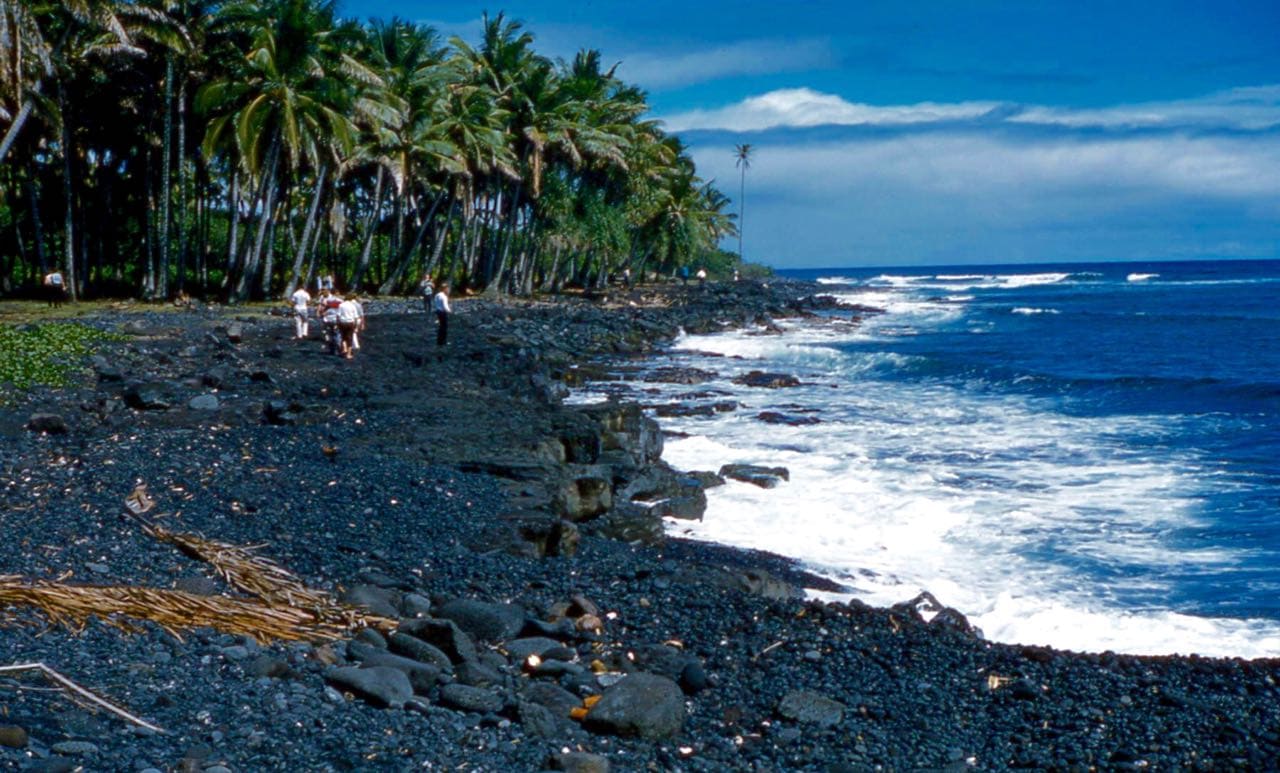
Kaimū beach is a relatively young black sand beach, formed in 1990, located south of Pahoa in the Puna district on the Big Island. Not many beaches on Big Island have such a rich and intriguing history as the likes of Kaimu beach.
Around 1983, the Kilauea volcano erupted, and lava slowly began covering the original beach. By 1990, it had reached the shoreline. At the time, 70 feet of molten lava buried the Kalapana community and other areas.
Over the course of a few months, the lava steadily flowed into the water, and new lands started to form because the lava covered the bay. Nearly thirty years later, the sculpting of new land is a sight to see.
This beach location is not fit for snorkeling or even swimming. Typically the ocean is unsafe because the waves and the ocean current are often too strong. Furthermore, there is no form of protection from the sun or the wind. On the other hand, for anyone interested in volcanoes, Kaimu is a must!
To visit this beach, go to Kalapana and get to the Puna coast by taking a short walk on a trail that leads to the coast. This trek should take approximately 10 minutes, and the trail has black sand too!
Plus, there are palm trees in the lava fields with cliff views. This landscape is simply spectacular.
Pohoiki Beach
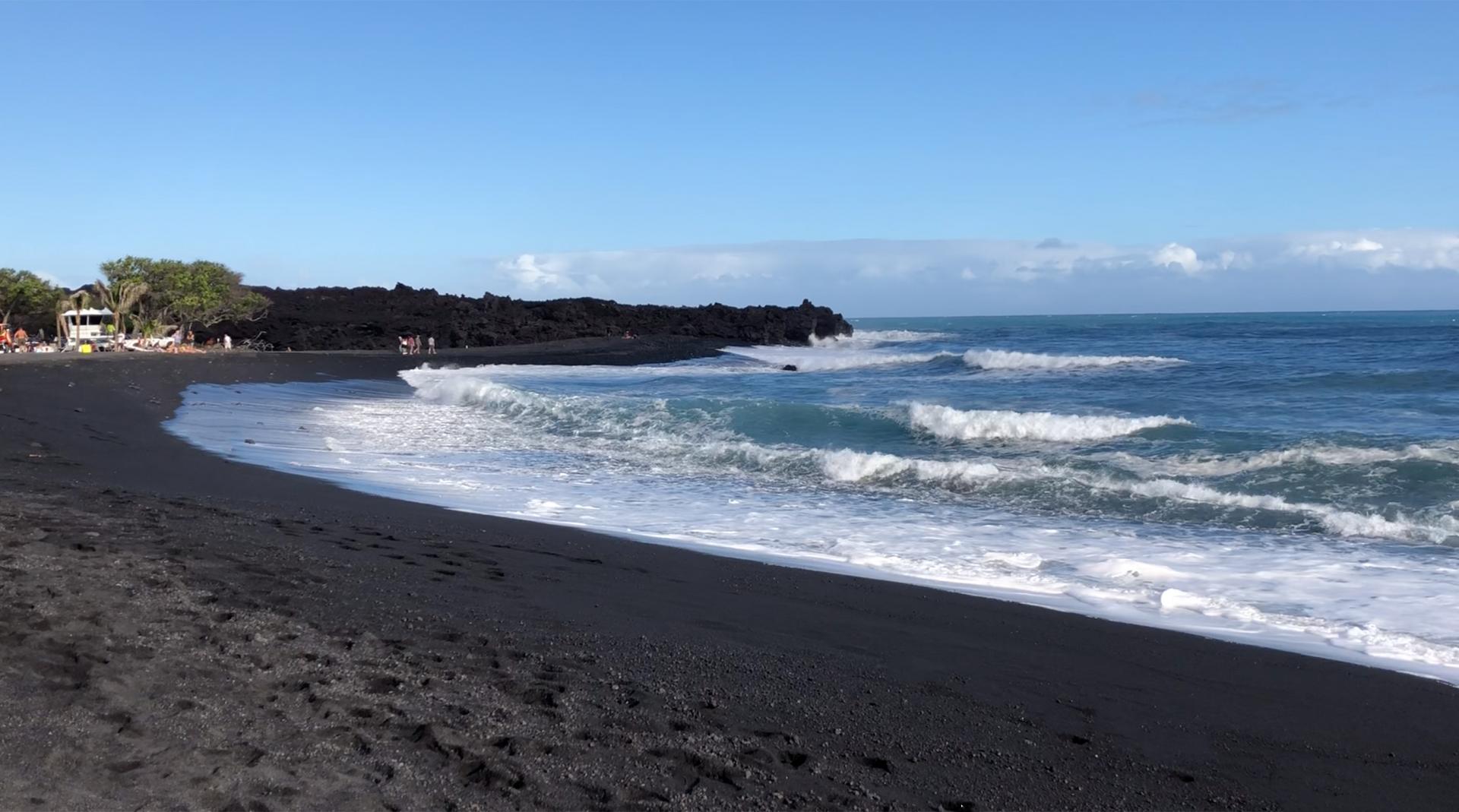
Pohoiki Beach is in the Isaac Hale beach park. This black sand beach came into existence after the 2018 Lower East Zone volcanic eruption, so this is one of the newer beaches on the map.
Though the lava stopped short of the harbor, many aspects of the island got damaged in the process, and it’s not quite the same as it used to be.
Most of the park survived, as well as the boat ramp. Currently, lots of new black sand is constantly coming into the bay, continually forming a black sand beach.
Here you can find many ocean thermal ponds and a recreational area. It is also a popular surfing destination for experienced riders.
The beach is a bit steep, and the sand is coarse. However, as the waves continue to grind down the lava fragments, the sand will become finer. Life has already begun returning to the ocean, and the beach is stunning to witness!
Previously, this beach was closed off and inaccessible to visitors. Now, it’s very easy to access, and now all you have to do is walk from the parking lot to the beach. Once there, feel free to walk about and experience the ambiance in this cool and relaxing area.
Waipi’o Beach Valley
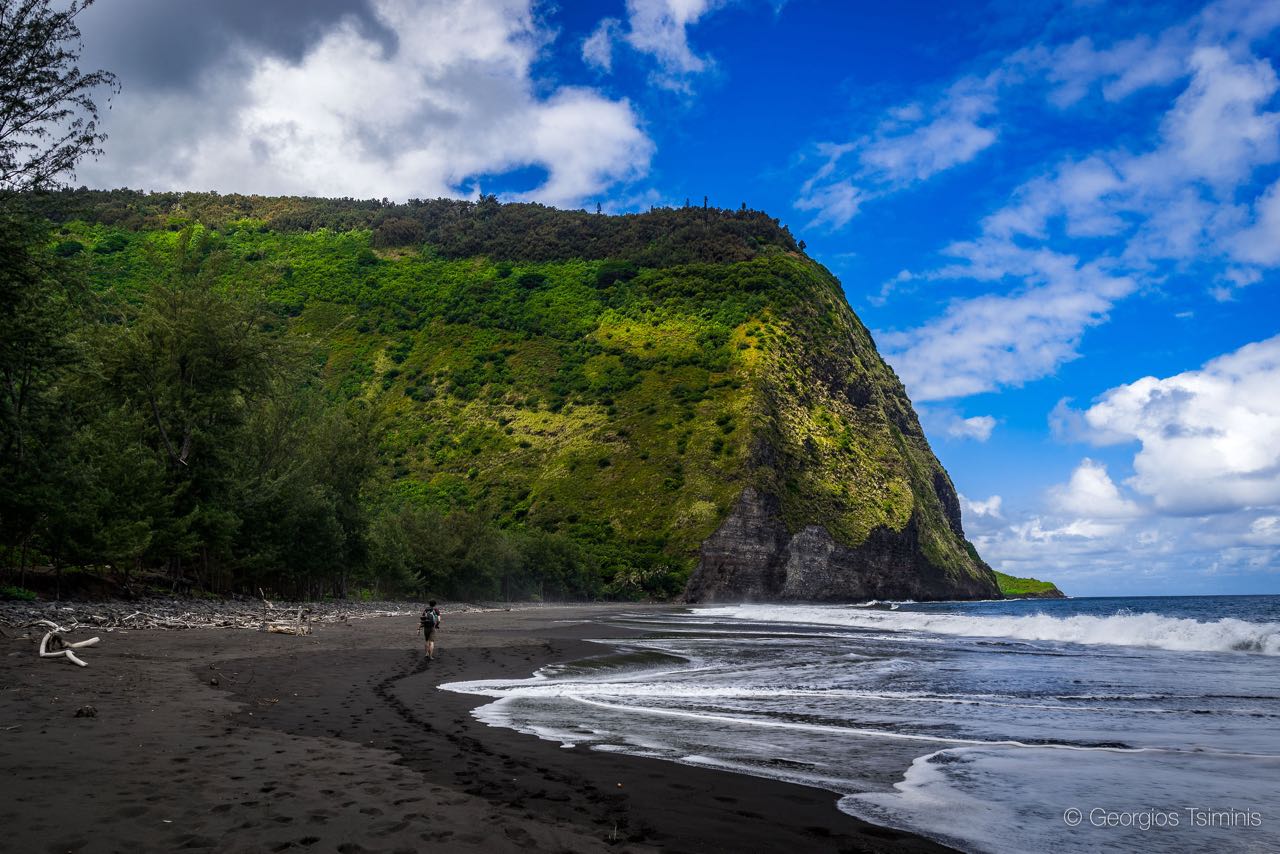
Waipi’o Valley gets its name from a river that flows through, with a depth of six miles and a width of one mile. You can find this beach toward the northeastern part of the Big Island.
Get ready to take in a beautiful landscape with a rich history since it was previously the home of numerous Hawaiian kings. Many sacred rituals were performed on this beach, and some locals still regard the land itself as blessed by the spirits of the kings.
This valley has thick green vegetation and gorgeous waterfalls that flow down the sides of the valley walls. They flow directly into the sea, along the velvety black sand.
It’s worth mentioning that the sand isn’t quite as dark as it is on Punaluu Beach. It is more of an ashy grey but still spectacular all the same.
The Waipi’o Beach has a nice overlook that allows you to see the beach from high up if you don’t want to venture down. You can only get to the beach on foot or by driving.
You will need a 4×4 to drive across the beach. Just be prepared for a slope of nearly 37 percent on the wall back up if you hike down to the beach.
Be attentive if you try to go into the water once you get there because Waipi’o Beach isn’t known for friendly currents. The waves crash onto the shore, and the rip currents are dangerous for swimmers.
Aside from this, the view from the bottom is magnificent.
It’s hard to describe the feeling of standing with the black sand between your toes, salty water spraying your face, and miles and miles of the horizon in front of you. The word breathtaking comes to mind!
Kehena Beach
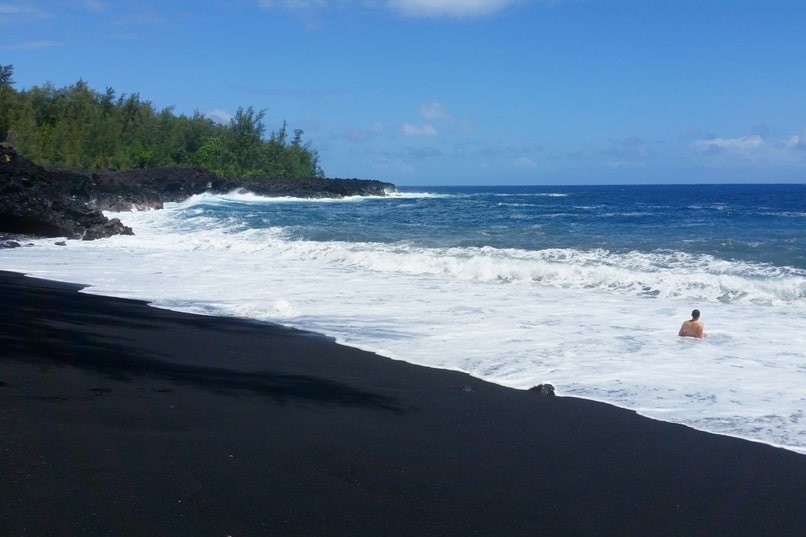
Kehena is on the eastern shore of the Big Island. Locals sometimes call it Dolphin Beach because of the Spinner dolphins that you’ll find frolicking about in the waters. Kehena Beach was born in 1955 after the lava from an eruption flowed over the sea cliffs and eventually into the ocean.
If you’re on the east end of the beach, you’ll still be able to see the rocky tip of the land, which is a product of the lava flow. From this interaction, the black sand arrived.
You can consider Kehena Beach to be a hidden gem because the way to reach it is by trekking down a steep path off the side of the main road. It will take you some time to get down there, but it’s worth it. Be aware that strong waves crash at the junction where the beach and the trail meet.
Make sure you go with at least one other person, as this journey may require you to jump down and consequently pull yourself back up when you return. Lovely Ironwood trees and Coconut palms are lining the beach for shade, which is nice to get a break from the sun.
You have the option to swim here if the waters are calm. At certain times throughout the year, the high surf takes over and brings about undertows and rip currents. One unique feature about this black sand beach is that sea turtles frequent the area, and a Laguna is just behind the beach.
It’s an awesome place to visit and hike the trail if you have the time.
Waianapanapa State Park

Waianapanapa is a remarkable destination in Maui for anyone who wants to have a little fun while taking in the scenery. Because the native plants are so thick and vibrant, the black sand contrasts with the cerulean blue waters and the greenery surrounding it beautifully.
There’s also a blowhole that shoots out water occasionally, but the best feature of the beach is the lava tube. You can’t find these types of formations anywhere else, and guests love to climb inside the cave for pictures.
Additionally, there’s a trail omg the coastline of the beach that goes on for miles. If you need to stop and take a break, there are bathroom facilities nearby. You may be able to dive into the water if the ocean is calm, but other times you can watch the waves crash into the rocky cliffs.
Waianapanapa should definitely be on your list if you’re traveling through Maui. The experience is second to none!
Richardson Ocean Park

Richardson Ocean Beach is a beach park that’s close to Hilo. It’s a haven for snorkelers that want to experience the waters on the coast of the Big Island (east side). It’s also family-friendly, which is different from a lot of the other locations we’ve mentioned.
Feel free to bring the kids, as there are tide pools, a nice clean picnic area, and eventide pools. Richardson Ocean Beach is one of many beaches along South Hilo (Kalaniana’ole). The weather is typically clear and dryer than surrounding beaches as well.
When you visit Richardson’s, you’ll find a marine conversation site. The ocean there is fed through freshwater reserves that create numerous ponds at this beach and others. The ocean water is warm even though the spring water is a bit cooler. The waters are also shallow and nearly current-free.
As you walk along this paradise, you’ll see that the sand is made from black lava and olivine crystals. These rock combinations make the sand black and green. Depending on the time of day you come, the sand can look brighter or darker.
While it’s not a completely black sand beach, we thought it was still cool to add to the list. It does contain some black sand, and you can do more activities here than at other beaches.
Final Thoughts
Black sand beaches are a rare and beautiful sight, with only a handful around the world.
Remember never to take any of the rocks or sand from the beaches, and don’t disturb the wildlife.
These beaches are the remains of land that was nearly destroyed. As such, it is protected by law for preservation. If you’re ever on the Big Island or other popular Hawaiian islands, be sure to check out some of the beaches on our list!
More about our TFVG Author
A seasoned traveller, Dad, and avid sports tourist, James foundered The Family Vacation Guide to share his expert vacation experiences- especially when it comes to being a travelling family man.
Featured in Travel articles such as Travel + Leisure, TripSavvy and SFGate, you know you're reading some of the best vacation tips online.



